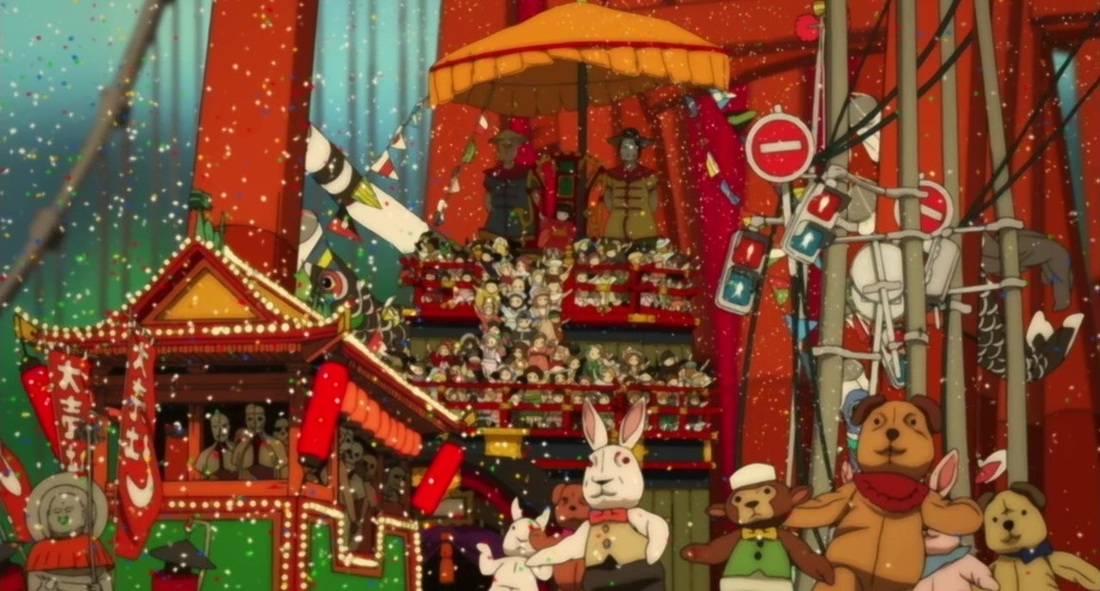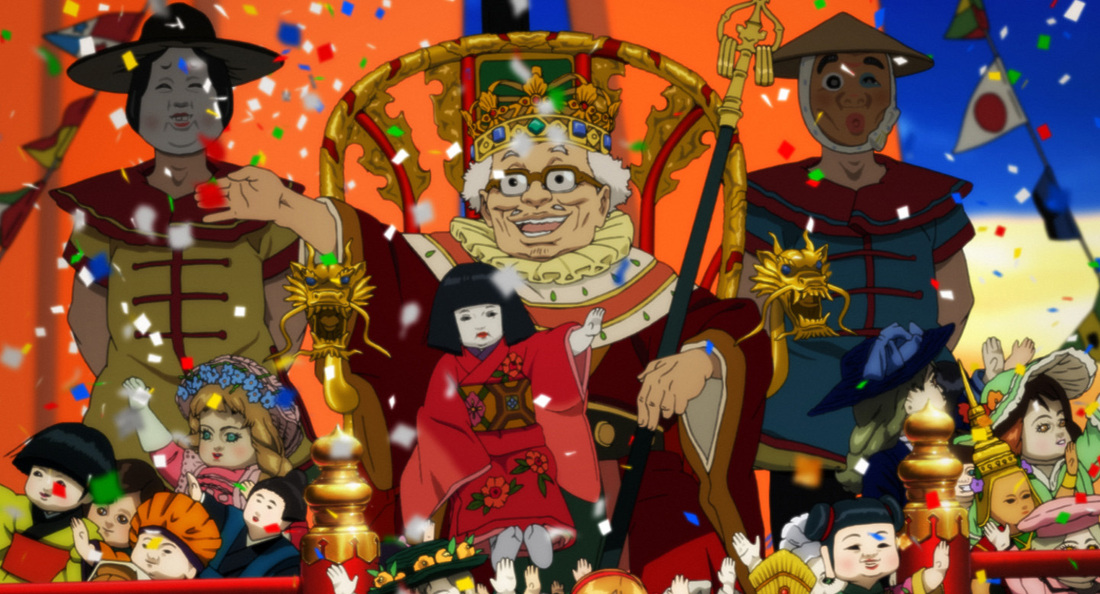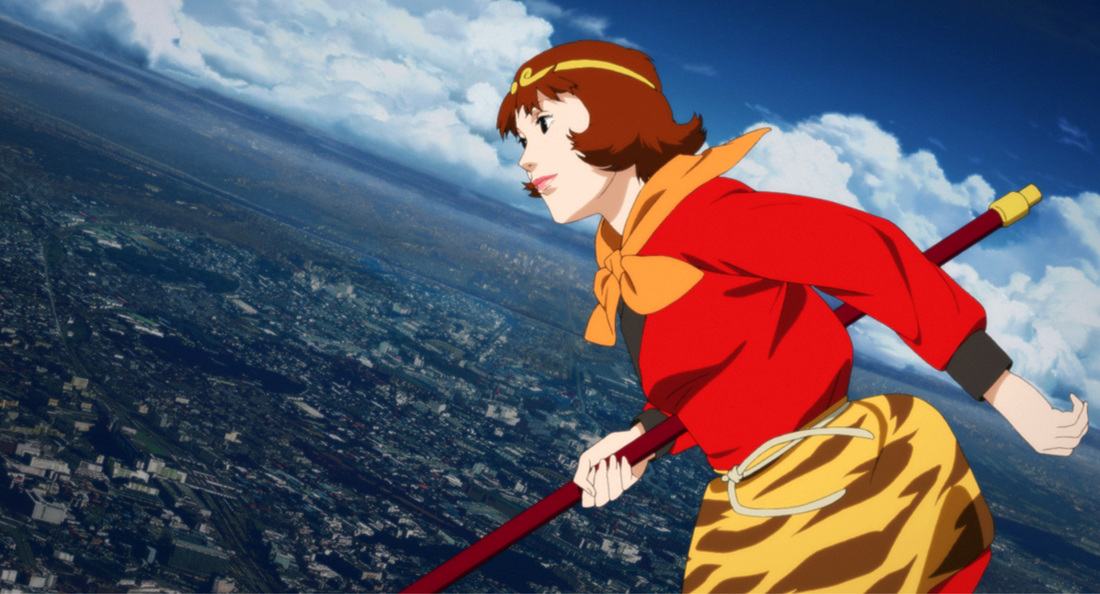The Two-Way Portal: Paprika as a Metaphor for Visual ArtBy Luke Mailloux
Paprika (2006), the vivid and complex anime by Satoshi Kon, is full of details and opportunities to extrapolate a theme or an idea. However, in the midst of Kon’s explosions of color, one particular idea takes a striking deviation from conventional preconceptions. In Paprika, the idea that dreams are an internal mental process that occurs during sleep is far too limited. According to the principles of this world, dreams are not limited to the mind of the dreamer, but rather can leak into the real world. This, however, can only be done through a device called the DC-Mini. Though it was once intended to be used for therapy, this iconic device was stolen and used to systematically target the team who developed it as well as wreak havoc in the rest of the world. Every science fiction film has an eye. The DC Mini just might be the eye in this film. It is a portal between two worlds. One world is often considered non-real. The other is the reality we live in. Yet it breaks the boundaries between the two worlds, and allows the dream world to infiltrate the real world. Film is not so different: it is a portal through which ideas are realized. Paprika is a metaphor for film and other visual arts in the sense that it invites the audience to reflect on the concept of two realities interacting and spilling over into each other. It is a profound reminder that the world of film has the ability to change the world of its audience. With this interpretation in mind, there are a few key elements in Paprika to consider: the DC Mini, the nature of dreams, the duality of Dr. Chiba and Paprika, the explicit references to film, and the detailed, vivid style of the animation.
The DC Mini is a device which lies at the center of the main conflict in Paprika. Initially, it seems like a portable gadget solely designed to allow people to share a dream and record it as video. After one uses it, however, it is unclear whether the user needs it to enter dreams again. It needs to be used to view dreams, but after extended periods of use, the DC Mini becomes less and less necessary for entry into the dream world. In addition to all of these properties, the DC Mini also allows a skilled user to directly influence the dream worlds of others. This is, of course, the issue with the DC Mini. Since no security settings were placed on this prototype invention, any user could access it, which allowed the person who stole it to begin causing chaos.This establishes the DC Mini as the initial portal through which one enters the dream world, and through which the dream world escapes into the real world. It is technically accessible to anyone who has the opportunity to use it, and through it both great and terrible things can be accomplished (Perper and Cornog). While these features do not make the DC Mini a substantial metaphor on its own, they do set the stage for reflecting on visual art and its own duality between the “dream-world” and the real world, as well as its beauties, dangers, and accessibility. In order to understand the power of viewing the DC Mini as a metaphor, it is important to understand the nature of the dream world in Paprika. That the dream world is more than just an internal mental space is known (Perper and Cornog). But there are some additional properties about the dream world that have to be considered. The first is that the dream world is accessible through technology. Although the DC Mini is the two-way portal and the primary focus of access to the dream world, Paprika also suggests that the internet is another means by which one can access the dream world (Mes). Throughout the movie, Detective Konakawa visits a webpage which acts as a bar where he can meet with Paprika or just talk to the bartenders (one of whom is voiced by Kon). The notion that this alternate world is both accessible and controllable to a degree almost makes it its own medium of art. If a bar can be set up on a webpage and accessible to anyone, then there are a potentially limitless number of environments that could be created in that manner. And of course, there is an undeniable parallel with film here. The dream world can be created and viewed and entered through a screen. But if the dream world is apparently accessible by more than just the DC Mini, what sets it apart from anything else is the fact that it allows the dream to pass in and out of the real world.
Another possibility within the dream world is the duality of identity. Interestingly enough, the only character who experiences this fully, Paprika, the namesake of the film, is the alter ego of Dr. Chiba. The relationship between these characters is the clearest illustration of two identities existing in parallel. This is because Dr. Chiba is trained to interact with dreams and has adapted this version of herself for the dream world. Detective Konakawa and other characters do not really have alternate identities, except for Dr.Tokita who becomes a large robot in the dream world. However, the reason behind Dr.Tokita’s alternate form is possibly due to his childish nature and big imagination. Paprika is much more intentional and shows that within the dream world, an individual can assume a new identity but must be intentional about it. There are a couple of ways to interpret this: the duality between Dr. Chiba and Paprika is a metaphor for acting in film or it could mean the audience assumes a different identity when participating in visual art. In a film this complex, either of these could be argued. In either case, assuming another identity allows either the audience or the actor to become more immersed in the dream world. Duality of identity is abstract and is not necessarily an obvious reference to film and visual art, but there are certainly scenes and themes which tribute film. The easiest examples to spot are the scenes in which Detective Konakawa experienced his recurring nightmare. He and Paprika watched the first scenes of the dream in a movie theater, and the detective soon found himself playing lead roles in different generic scenes of classic movies. As the audience discovered, the detective once had great interest in film, and he and his friend had once worked on a film together. Because of this, he knew quite a bit about film and cited some technical principles to Paprika. While Paprika seems to embody a more abstract allusion to film, Detective Konakawa apparently represents film explicitly. While this does not deal directly with the metaphor of the two-way portal, it is still one of the many ways film is referenced in Paprika, and serves the purpose of at least establishing a concrete basis for the rest of the intertwined themes of visual art.
The final element throughout Paprika is one of its most widely recognized features: the vivid color and incredible detail. At face-value, the amount of color that went into the parades of the Chairman’s dream as it consumed other dreams is meant to emphasize the “visual” in visual art. But more specifically, the color and detail exist primarily within the dream-world (Mes). That is, the idea space for visual art is what is being highlighted. The world of art and film, in comparison to the real world, is much more colorful and full of detail – according to the way dreams are portrayed in Paprika. It is full of inanimate objects and random – but dazzling – scenery. It is, perhaps, meant to express the pursuit many artists make for appreciating things otherwise unappreciated. And to see so much color and energy escape into and wreak havoc on the world, the image is of terror in the context of the plot. But in the context of the artist, that is the dream: for one’s work to escape into the real world and change it. Stepping back and looking at the film as a whole, Paprika is complicated and full of themes to detect. In one light, it can be viewed as a reflection on visual art and film, the idea of two parallel worlds assigning us parallel identities as we interact with them. The film presents itself as a metaphor for the two-way portal between the world of art and film and the world of its audiences. The literal portal is the artifact known as the DC Mini, which is supplemented by characters like Dr. Chiba and Detective Konakawa who each represent film production and art in a different way. Between them and this realm in which dreams occur, there is an impressive display of colors which point toward the dream which fuels artists. The nature of dreams is the nature of visual art: created by people to spill into and influence the world in which they live. Works Cited Mes, Tom. ""Requiem For A Dream: The Films Of Satoshi Kon Bring The Depths Of The Subconscious Into Bright Anime Light." 2007.Academic Search Complete. Web. 21 November 2014. Perper, Timothy and Martha Cornog. "Psychoanalytic Cyberpunk Misummer-Night's Dreamtime: Kon Satoshi's "Paprika"." 2009.JSTOR. Web. 21 November 2014. |




